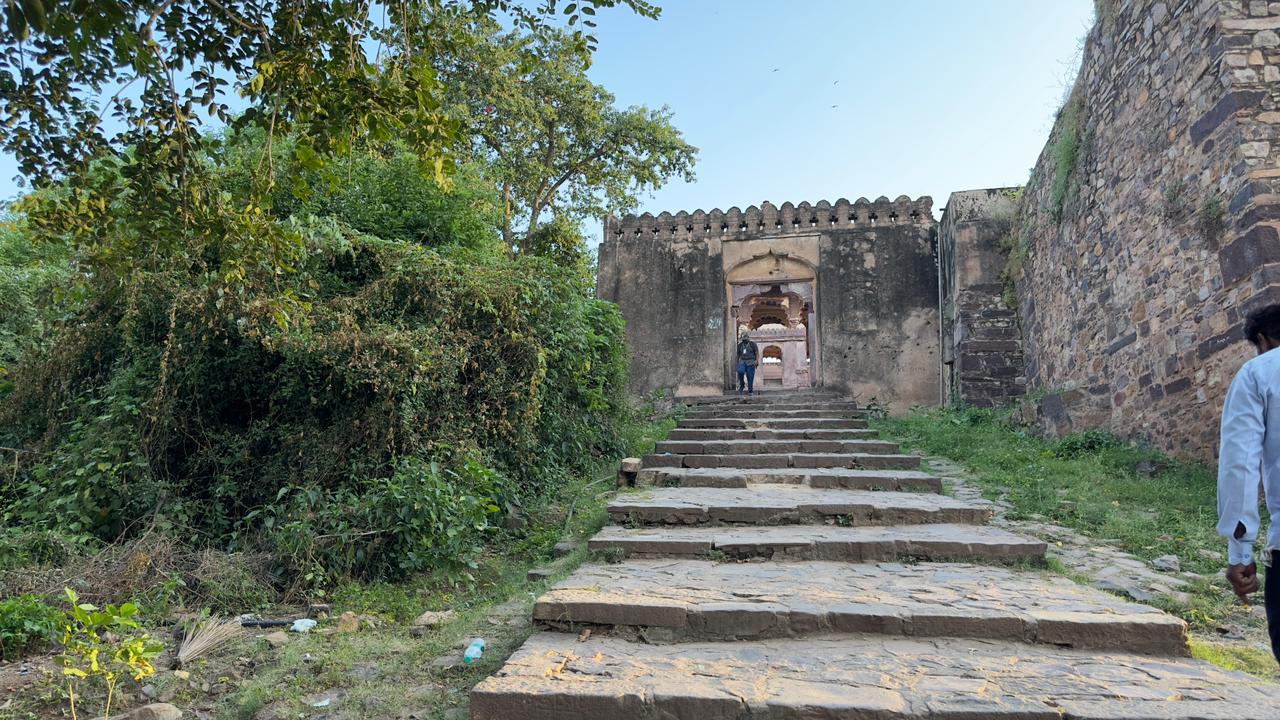
October 12, 2023
Thursday, 10:30 PM
Ranthambore Regency,
Sawai Madhopur,
Ranthambore, Rajasthan
We talked about the ghariyals yesterday; let’s talk about them some more before we get to what happened today because ghariyals (Gavialis gangeticus) are now found mostly in three tributaries of the Ganges — the Chambal and the Girwa Rivers — in India, and the Rapti-Naryani River in Nepal even though they were once found in large distributions in several major river systems like the Indus, the Ganges, Brahmaputra and the Mahanadi-Brahmani-Baitrani stretching across India, Bhutan, Bangladesh, Nepal and Pakistan. But due to massive habitat loss, large populations of ghariyals have been lost. In India, we have three Ghariyal Reserves in Uttar Pradesh, Madhya Pradesh and Rajasthan. Yesterday, I visited one of these Reserves in Palighat Village of Sawai Madhopur in Rajasthan on the banks of river Chambal.
Ghariyal gets its name after the boss or bulb on the tip of its snout that looks like a small earthen pitcher, which is ghara in Hindi; thus ghariyal. Ghariyal is among the longest crocodiles in the world with mature females reaching up to 4.5 meters (14 feet) and males touching up to 6 meters (19 ft) and carries smooth epidermal scales on its thick skin. Ghariyal does not leave water to tread on that land all that often and in that respect it is, by far, the most aquatic of all crocodilians.
The major threats to its existence include loss of habitat on account rivers’ being dammed and diverted to promote irrigation; loss of prey base due to fishing and the use of nets that prove lethal to adult and subadult ghariyals; and poaching for its body parts for use as medicine (little scientific about such medicinal use).
As for today, I decided to pay a visit to a temple in the core zone of Ranthambore Tiger Reserve, and it was interesting in its own way. There are many such temples in Ranthambore and present a challenge to the forest department because they tend to be the flashpoints of human-animal conflict, which is a complex issue. More on that later.
The daily struggle with recording, editing and uploading the daily Vlogs continues to be a challenge because the videos go through three layers of editorial checks by both on-site and off-site teams and there is a high degree of coordination required between the teams. And our editor continues to make minor mistakes that have to be corrected and these minor mistakes take a chunk of our time. The streamlining of editing on the go is still on-going and we hope to improve in a week’s time. But, well, we hoped to improve in a week’s time a week ago as well. Apart from hoping, we have been working towards it, too. The progress, despite all that, has still been sluggish.
Also, I interviewed the Chief Conservator of Forests, Sh. P. Kathirvel, as scheduled, and the interview would soon be live with its glimpses available in the Daily Vlog to be released soon. We are also working on releasing the complete video of the interview of Sh. Apoorva Krishna Srivastava, Divisional Forest Officer (DFO), Alwar, Rajasthan conducted on October 3, 2023. You’ll be able to watch the complete interview in a day or two.